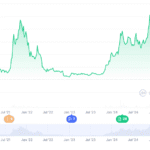- Tokenizing DAT stocks introduces investor risk through market volatility.
- Market volatility and regulatory challenges intensify investor risk.
- Experts warn on double-layered risk from crypto assets.
Tokenizing stocks of Digital Asset Treasuries (DATs) introduces heightened risk for investors, according to crypto executives, due to blockchain volatility and regulatory uncertainties prevalent in the financial markets.
This development underscores potential challenges in crypto markets, influenced by volatile trading dynamics, regulatory ambiguity, and corporate governance complexities, prompting industry-wide caution.
The decision to tokenize stocks of Digital Asset Treasuries (DATs) is sparking concern over potential risks. Volatile blockchain markets pose challenges, with round-the-clock trading and smart contract vulnerabilities highlighted by industry leaders.
Expert Insights
Key figures like Kadan Stadelmann and Kanny Lee have voiced insights on the situation, emphasizing the complexity of managing tokenized equity in volatile settings. No major statements have emerged from other high-visibility crypto leaders as yet.
“Blockchains trade 24/7, whereas traditional markets have specific hours of operation,” noted Kadan Stadelmann, CTO of Komodo Platform. He highlighted risks such as sharp on-chain price movements outside traditional market hours that could cause a run on stocks before companies can respond.
Immediate Market Effects
Immediate effects include liquidity shifts and increased risks for investors. DAT stock funding has surged, leading to a significant movement of liquidity from traditional venture capital to public equities.
The fluctuations in DAT equity lead to premium trading, with stocks often exceeding market value. This could result in greater arbitrage opportunities and new avenues for regulatory scrutiny as authorities evaluate the trading landscape of tokenized equities.
Regulatory Focus
The risks are significant, with synthetic equity creating layers of exposure for investors. Compounding factors include the volatility of crypto holdings and governance complexities, demanding thorough scrutiny.
Insights suggest that potential outcomes involve increased regulatory focus and infrastructure updates like 24/7 trading provisions. Historical data from similar projects notes heightened on-chain governance activity and price discrepancies during volatile periods.






